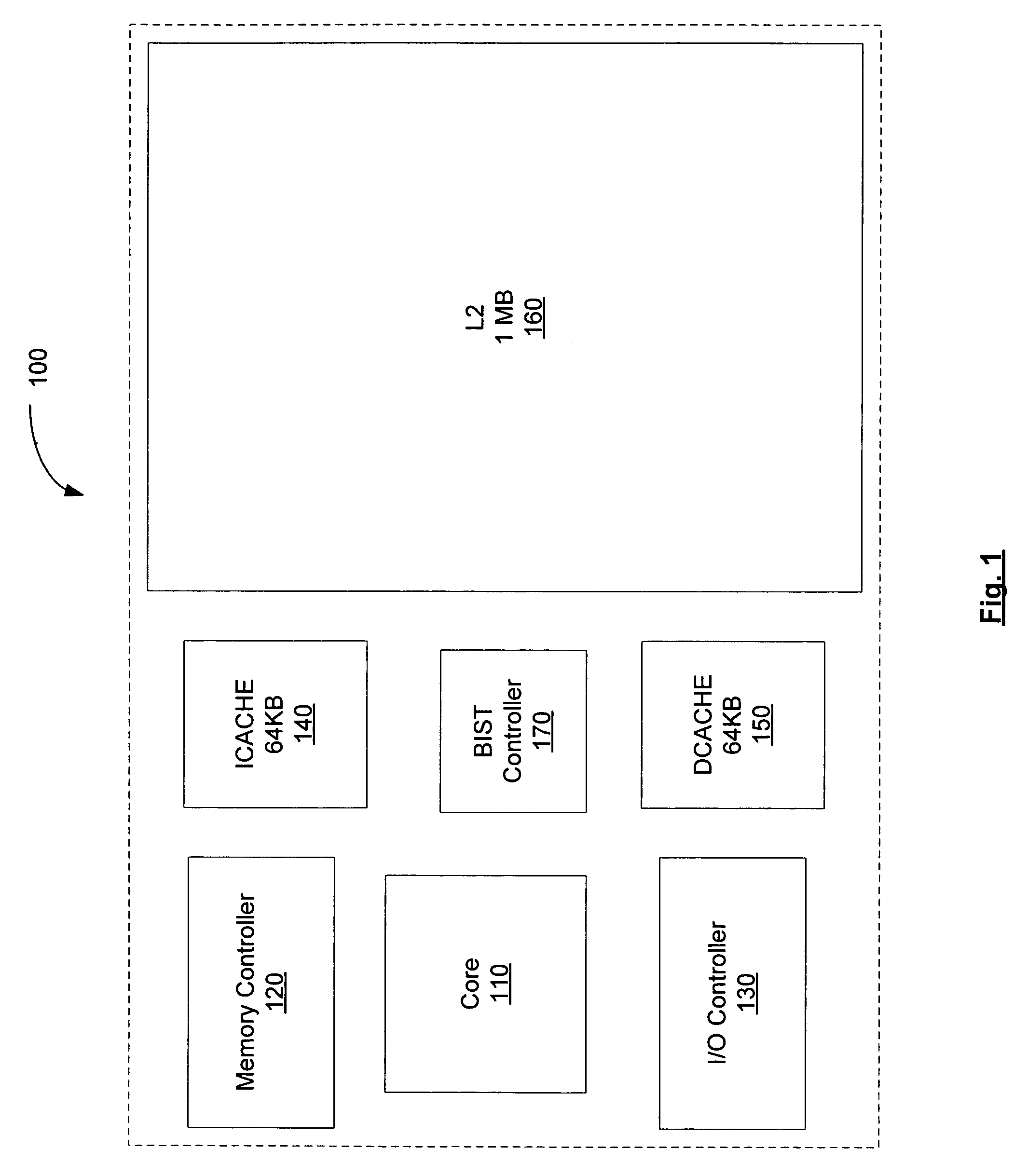Compressed encoding for repair
a technology of compressed encoding and repair, which is applied in the field of repair of embedded memory devices, can solve the problems of increasing the complexity of the circuitry formed on the chip, increasing the complexity of the testing required to ensure the circuitry functions correctly, and making conventional testing using external test equipment extremely difficul
- Summary
- Abstract
- Description
- Claims
- Application Information
AI Technical Summary
Benefits of technology
Problems solved by technology
Method used
Image
Examples
Embodiment Construction
[0022]FIG. 1 illustrates a block diagram of one embodiment of a microprocessor 100 configured to perform self test and repair. In one embodiment, each of the components illustrated in FIG. 1 may be manufactured on a single die. Processor 100 includes a core 110, memory controller 120, I / O controller 130, instruction cache (Icache) 140, data cache (Dcache) 150, level 2 (L2) cache 160 and built in self test (BIST) controller 170. Icache 140 and Dcache 150 may be level 1 (L1) caches. For purposes of discussion, assume the L2 cache includes 1 MByte of storage, while each of the instruction 140 and data 150 caches includes 64 Kbytes of storage. Consequently, the L2 cache 160 is configured to store 16 times the data of either the Icache 140 or the Dcache 150. The cache blocks in the block diagram have been drawn to approximate the relative size of each of the caches.
[0023]Generally speaking, the likelihood of a defect in a component of a die corresponds to the amount of area occupied by t...
PUM
 Login to View More
Login to View More Abstract
Description
Claims
Application Information
 Login to View More
Login to View More - R&D
- Intellectual Property
- Life Sciences
- Materials
- Tech Scout
- Unparalleled Data Quality
- Higher Quality Content
- 60% Fewer Hallucinations
Browse by: Latest US Patents, China's latest patents, Technical Efficacy Thesaurus, Application Domain, Technology Topic, Popular Technical Reports.
© 2025 PatSnap. All rights reserved.Legal|Privacy policy|Modern Slavery Act Transparency Statement|Sitemap|About US| Contact US: help@patsnap.com



